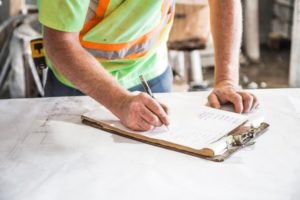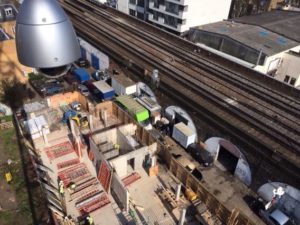Despite there being no specific instruction (for now) for construction sites to close during the nationwide lockdown many sites have announced they are pausing operations to try and help slow down the spread of Coronavirus, by reducing travel to and from site, and to help to model best practice in maintaining social distancing.
The Construction Leadership Council has published Site Operating Procedures to help construction firms implement the Government’s social distancing recommendations during the COVID-19 pandemic, and ensure that the health and safety requirements of any construction activity are not compromised.
Vacant construction sites can be a prime target for intruders and vandals, particularly if expensive machinery, equipment and tools are left on-site.
Undertaking a risk assessment, carried out by a construction site security specialist, is usually the first step in identifying how best to make your site safe and secure, but under lockdown this inspection is a measure that site owners may need to conduct themselves.

Whether your site is on emergency lockdown, or you are simply planning an extended site closure, these checks can help provide peace of mind that you have appropriate security arrangements in place:
-
- Site plan – make a detailed plan, marking perimeters and boundaries, access points and information on adjoining properties and premises, which could impact on the safety and security of your site. Include details of any areas or equipment that may need making safe or secure such as scaffold, cranes, excavations etc. Photos can help to identify any issues that may need to be addressed.
-
- Entry points – as well as site access points also consider entry from higher levels such as from ladders, scaffolding, fire escapes etc. Having assessed site access points, it is essential that entry points are shored up to withstand any attempts at forced entry. Anti-climb fence panels are a temporary solution that can be quickly deployed – and repositioned – to secure hazardous or vulnerable areas. Installing vehicle access gates will help to strengthen your perimeter security.
-
- Access control – log details, and take photos, of any locking systems you put in place on site and who is a keyholder, so that you can control how many keys are in use and who has access. If entry points are accessible by electronic key code or cards then consider restricting access for all except key site personnel.
-
- Site alarms and CCTV – If an alarm system is already in place make sure it has been tested and is fully operational. You may need to update your security provider about new working arrangements on site, or site closure, to ensure it is being monitored around the clock. CCTV cameras not only act as a successful deterrent for the majority of would-be intruders or vandals but, in the event of a break-in, it provides video evidence during criminal proceedings. Cameras can be installed using anti-climb measures to prevent attempts to tamper the system. They can also include a public address option, allowing loud warning messages to be broadcast, which can be highly effective at encouraging trespassers and intruders to move on. Although CCTV is generally viewed as a more cost-effective solution than manned security, security guards provide a continuous, formidable, physical patrol around your site and should be considered as you carry out your security risk assessment.
-
- Beyond the perimeter – any additional buildings or storage areas that fall beyond the construction perimeter should not be overlooked, particularly if they contain costly raw materials, supplies or equipment or if they may restrict other security measures e.g. by causing an obstruction in front of CCTV cameras. For the purposes of your site safety and security plan, ensure any external areas or buildings are included within your site perimeter. You may find your site insurance policy may not cover losses from these areas if they have not been adequately secured.
-
- Security lighting – although CCTV systems are often equipped with a night vision mode, motion activated lights and lighting towers will help deter criminals and illuminate areas to show that sites are empty and protected. Having security lighting installed onsite may also help to reduce your insurance premiums. LED lights are energy-saving and minimise call-outs for replacement bulbs.
- Business equipment – if your site contains any areas where business administration is carried out, using computers, screens and other office equipment, it is worth considering whether this can temporarily be removed and secured off-site during lockdown. At the very least, this kind of equipment should be covered up, hidden from view or locked away in a less accessible area of the site. All equipment should be unplugged when not in use to minimise the risk of fire and any sensitive data should be stored off-site.

SafeSite Facilities can help you select the right security solutions for your construction site, with products and services available nationwide to buy or hire. Contact their team of friendly professionals for expert advice and a free, no obligation quotation. Even during this unprecedented time of national lockdown SafeSite Facilities can still provide safe installations, remote security monitoring and, in the most urgent situations, site visits carried out in line with government advice on social distancing.
The post Construction site security during COVID-19 lockdown appeared first on UK Construction Online.
Walang komento:
Mag-post ng isang Komento